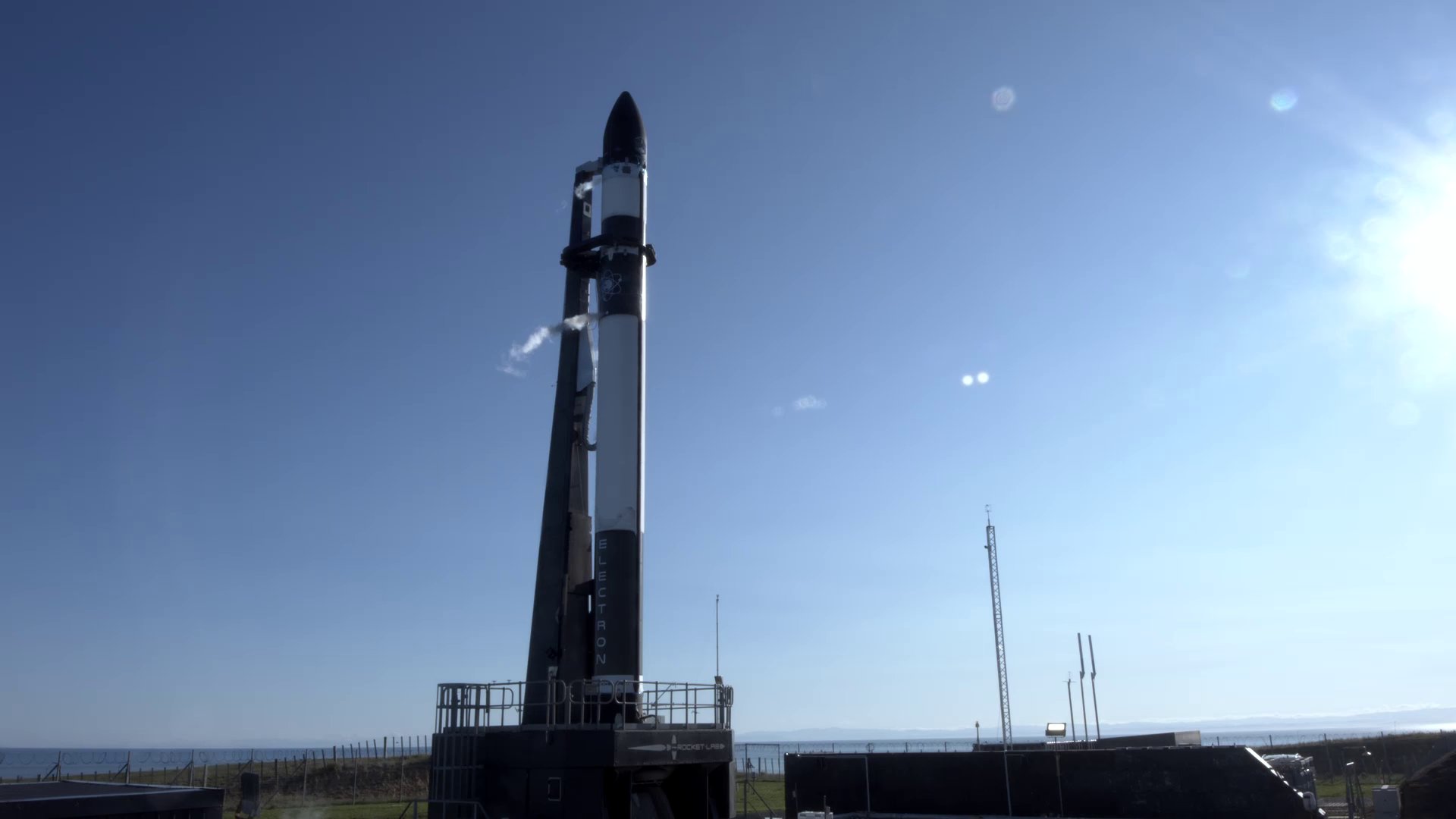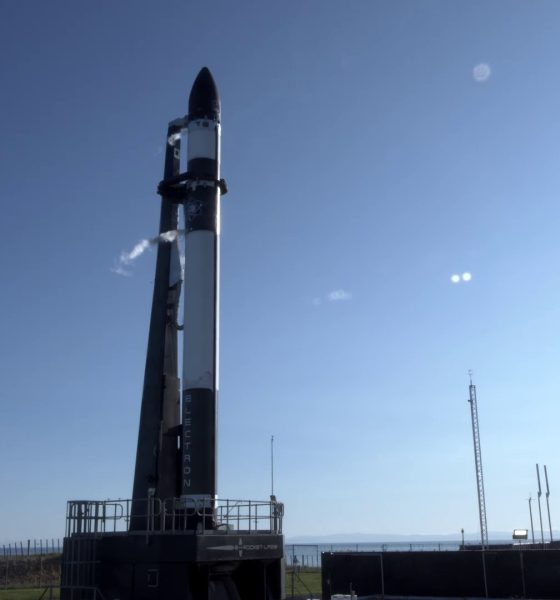

News
Rocket Lab’s 12th Electron mission “Don’t Stop Me Now” ready for launch
During the height of the global coronavirus pandemic, SpaceX and United Launch Alliance (ULA) missions from Florida were deemed “critical infrastructure” by the US federal government. This allowed the launchers to create safe working environments supporting rocket production and steady launch cadences. However, the nation’s most prominent launcher of smallsats, Rocket Lab, headquartered in Long Beach, California took a different approach halting all production and launch related operations. Although headquartered in the US, Rocket Lab manufactures its Electron rocket in Auckland, New Zealand, and launches from its Launch Complex 1 on New Zealand’s Mahia Peninsula.

Soon after the New Zealand government initiated a strict nationwide Level 4 lockdown requiring all residents, except essential workers, to remain at home on March 23rd, Rocket Lab stood down from operational missions. Unlike in the United States, the launching and production of rockets were not deemed critical in New Zealand and could not proceed. The lockdown went into place just five days ahead of the company’s scheduled twelfth launch of Electron on March 30th. Rocket Lab announced that the “Don’t Stop Me Now” launch (named in honor of a Rocket Lab board member that recently passed away) would be postponed but did not announce a new launch date as, at the time, it was unknown just how long the nationwide Level 4 lockdown would last.
In early May, Rocket Lab was allowed to return to operational status as pandemic restrictions began to lift in New Zealand. Company founder and chief executive officer, Peter Beck, announced on Twitter that the Electron rocket had returned to LC-1 to complete a wet dress rehearsal (WDR) ahead of announcing a new targeted launch date. Rocket Lab then confirmed that all WDR objectives had been successfully met and the twelfth Electron mission would be proceeding to a targeted launch date in early June.
That's a perfect wet dress rehearsal done and dusted for our 12th Electron mission! We're excited to be back on the pad and launching soon for @NatReconOfc, @NASA, and UNSW Canberra Space. Stay tuned for launch window dates soon! pic.twitter.com/o8oM4fe5jO— Rocket Lab (@RocketLab) May 7, 2020
Rocket Lab was quick to return to launch procedures as the Electron vehicle and LC-1 remained in “a state of readiness throughout the COVID-19 lockdown.” In a statement issued soon after the successful WDR, the company assured that “enhanced health and safety processes will be implemented for this launch in line with government health advice to protect Rocket Lab personnel. These measures include physical distancing, split shifts, maintaining contact tracing registers, and enhanced cleaning procedures.”
pic.twitter.com/N9x9saYPEe— Rocket Lab (@RocketLab) June 9, 2020
The twelfth “Don’t Stop Me Now” Electron mission is designated as a rideshare which will carry multiple smallsat payloads to orbit for NASA, the National Reconnaissance Office (NRO), and University of New South Wales (UNSW) Canberra Space. Electron’s Kick Stage propelled by the 3D-printed Curie engine will deliver the ANDESITE (Ad-Hoc Network Demonstration for Extended Satellite-Based Inquiry and Other Team Endeavors) spacecraft developed by teams at Boston University under NASA’s CubeSat Launch Initiative (CSLI). It will use a series of minisatellites to measure the electrical currents of the Earth’s magnetic field from low Earth orbit. The payload carried for the NRO, Rapid Acquisition of a Small Rocket (RASR) contract vehicle, follows a previously NRO-dedicated mission launched in January 2020. Finally, the twelfth launch of the Electron will also support the M2 Pathfinder (M2PF) communications satellite to low Earth orbit UNSW Canberra Space.
The next mission from #UNSWCBR Space, M2 Pathfinder, is launching on @RocketLab's Mission 12 “Don’t Stop Me Now” on June 11.
M2PF is a significant next step in flight heritage for our program of developing intelligent space systems and the development of Australian capability. pic.twitter.com/dseWRUzhzP— UNSW Canberra (@UNSWCanberra) May 29, 2020
“Don’t Stop Me Now” has a fourteen day launch widow extending from June 11th to June 24th with a daily launch opportunity during a two-hour window 04:43 – 06:32 UTC (00:43 – 02:32 EDT). The Rocket Lab team is currently counting down to the first launch attempt scheduled for Thursday, June 11th at the top of the window at 04:43UTC (00:43 EDT) from LC-1 in Mahia, New Zealand. Fifteen minutes ahead of the launch attempt, a live stream will be posted to Rocket Lab’s social media accounts and made available on the company’s website: www.rocketlabusa.com/live-stream.
Check out Teslarati’s newsletters for prompt updates, on-the-ground perspectives, and unique glimpses of SpaceX’s rocket launch and recovery processes.

Elon Musk
Elon Musk’s X will start using a Tesla-like software update strategy
The initiative seems designed to accelerate updates to the social media platform, while maintaining maximum transparency.

Elon Musk’s social media platform X will adopt a Tesla-esque approach to software updates for its algorithm.
The initiative seems designed to accelerate updates to the social media platform, while maintaining maximum transparency.
X’s updates to its updates
As per Musk in a post on X, the social media company will be making a new algorithm to determine what organic and advertising posts are recommended to users. These updates would then be repeated every four weeks.
“We will make the new 𝕏 algorithm, including all code used to determine what organic and advertising posts are recommended to users, open source in 7 days. This will be repeated every 4 weeks, with comprehensive developer notes, to help you understand what changed,” Musk wrote in his post.
The initiative somewhat mirrors Tesla’s over-the-air update model, where vehicle software is regularly refined and pushed to users with detailed release notes. This should allow users to better understand the details of X’s every update and foster a healthy feedback loop for the social media platform.
xAI and X
X, formerly Twitter, has been acquired by Elon Musk’s artificial intelligence startup, xAI last year. Since then, xAI has seen a rapid rise in valuation. Following the company’s the company’s upsized $20 billion Series E funding round, estimates now suggest that xAI is worth tens about $230 to $235 billion. That’s several times larger than Tesla when Elon Musk received his controversial 2018 CEO Performance Award.
As per xAI, the Series E funding round attracted a diverse group of investors, including Valor Equity Partners, Stepstone Group, Fidelity Management & Research Company, Qatar Investment Authority, MGX, and Baron Capital Group, among others. Strategic partners NVIDIA and Cisco Investments also continued support for building the world’s largest GPU clusters.
News
Tesla FSD Supervised wins MotorTrend’s Best Driver Assistance Award
The decision marks a notable reversal for the publication from prior years, with judges citing major real-world improvements that pushed Tesla’s latest FSD software ahead of every competing ADAS system.

Tesla’s Full Self-Driving (Supervised) system has been named the best driver-assistance technology on the market, earning top honors at the 2026 MotorTrend Best Tech Awards.
The decision marks a notable reversal for the publication from prior years, with judges citing major real-world improvements that pushed Tesla’s latest FSD software ahead of every competing ADAS system. And it wasn’t even close.
MotorTrend reverses course
MotorTrend awarded Tesla FSD (Supervised) its 2026 Best Tech Driver Assistance title after extensive testing of the latest v14 software. The publication acknowledged that it had previously criticized earlier versions of FSD for erratic behavior and near-miss incidents, ultimately favoring rivals such as GM’s Super Cruise in earlier evaluations.
According to MotorTrend, the newest iteration of FSD resolved many of those shortcomings. Testers said v14 showed far smoother behavior in complex urban scenarios, including unprotected left turns, traffic circles, emergency vehicles, and dense city streets. While the system still requires constant driver supervision, judges concluded that no other advanced driver-assistance system currently matches its breadth of capability.
Unlike rival systems that rely on combinations of cameras, radar, lidar, and mapped highways, Tesla’s FSD operates using a camera-only approach and is capable of driving on city streets, rural roads, and freeways. MotorTrend stated that pure utility, the ability to handle nearly all road types, ultimately separated FSD from competitors like Ford BlueCruise, GM Super Cruise, and BMW’s Highway Assistant.
High cost and high capability
MotorTrend also addressed FSD’s pricing, which remains significantly higher than rival systems. Tesla currently charges $8,000 for a one-time purchase or $99 per month for a subscription, compared with far lower upfront and subscription costs from other automakers. The publication noted that the premium is justified given FSD’s unmatched scope and continuous software evolution.
Safety remained a central focus of the evaluation. While testers reported collision-free operation over thousands of miles, they noted ongoing concerns around FSD’s configurable driving modes, including options that allow aggressive driving and speeds beyond posted limits. MotorTrend emphasized that, like all Level 2 systems, FSD still depends on a fully attentive human driver at all times.
Despite those caveats, the publication concluded that Tesla’s rapid software progress fundamentally reshaped the competitive landscape. For drivers seeking the most capable hands-on driver-assistance system available today, MotorTrend concluded Tesla FSD (Supervised) now stands alone at the top.
News
Elon Musk’s Grokipedia surges to 5.6M articles, almost 79% of English Wikipedia
The explosive growth marks a major milestone for the AI-powered online encyclopedia, which was launched by Elon Musk’s xAI just months ago.

Elon Musk’s Grokipedia has grown to an impressive 5,615,201 articles as of today, closing in on 79% of the English Wikipedia’s current total of 7,119,376 articles.
The explosive growth marks a major milestone for the AI-powered online encyclopedia, which was launched by Elon Musk’s xAI just months ago. Needless to say, it would only be a matter of time before Grokipedia exceeds English Wikipedia in sheer volume.
Grokipedia’s rapid growth
xAI’s vision for Grokipedia emphasizes neutrality, while Grok’s reasoning capabilities allow for fast drafting and fact-checking. When Elon Musk announced the initiative in late September 2025, he noted that Grokipedia would be an improvement to Wikipedia because it would be designed to avoid bias.
At the time, Musk noted that Grokipedia “is a necessary step towards the xAI goal of understanding the Universe.”
Grokipedia was launched in late October, and while xAI was careful to list it only as Version 0.1 at the time, the online encyclopedia immediately earned praise. Wikipedia co-founder Larry Sanger highlighted the project’s innovative approach, noting how it leverages AI to fill knowledge gaps and enable rapid updates. Netizens also observed how Grokipedia tends to present articles in a more objective manner compared to Wikipedia, which is edited by humans.
Elon Musk’s ambitious plans
With 5,615,201 total articles, Grokipedia has now grown to almost 79% of English Wikipedia’s article base. This is incredibly quick, though Grokipedia remains text-only for now. xAI, for its part, has now updated the online encyclopedia’s iteration to v0.2.
Elon Musk has shared bold ideas for Grokipedia, including sending a record of the entire knowledge base to space as part of xAI’s mission to preserve and expand human understanding. At some point, Musk stated that Grokipedia will be renamed to Encyclopedia Galactica, and it will be sent to the cosmos.
“When Grokipedia is good enough (long way to go), we will change the name to Encyclopedia Galactica. It will be an open source distillation of all knowledge, including audio, images and video. Join xAI to help build the sci-fi version of the Library of Alexandria!” Musk wrote, adding in a later post that “Copies will be etched in stone and sent to the Moon, Mars and beyond. This time, it will not be lost.”








